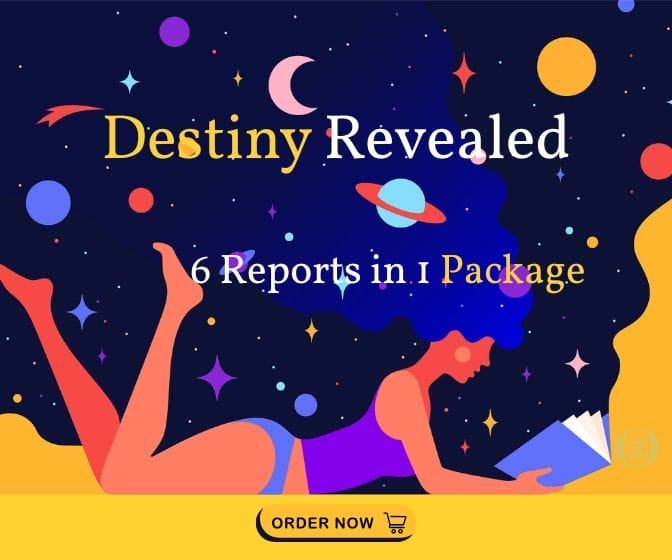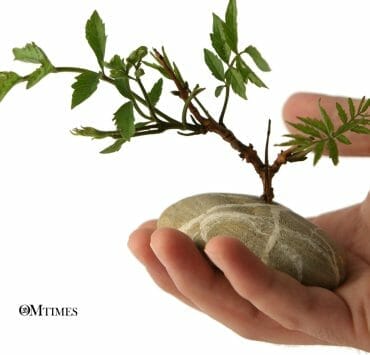Nyingma – The Oldest Tibetan Buddhist School of Wisdom

The Nyingma school, the oldest of the four schools of Tibetan Buddhism, is based on the teachings of Guru Rinpoche and the Great Sage Santaraksita.
The Nyingma School of Tibetan Buddhist School
Buddhism is an inexhaustible source of knowledge. From the teachings of Buddha, the lessons multiplied and renewed, forming different schools and perspectives on the world, enlightenment, and practices.
Practice kindness, do not create suffering, direct your own mind. This is the essence of Buddhism. ~ The Buddha
Buddha is the historical character common to all Buddhist traditions. He left no deeds, nothing that could be considered official by the doctrine.
He gave lectures (Dharma Talks), sermons, and general guidelines (you can say parables if you will) without leaving anything on record. The body of Teaching that arrived at our awareness today came afterward. They were based on the disciples’ reports and those that keep the oral tradition of his teachings alive.
Only after Buddha’s death did the disciples record the teachings of the master, a historical trajectory that we already know how it ends: splits, ruptures, disputes between groups aiming at the protagonist of the doctrine.
History is always in charge of transforming everything “that was once” into something that “is not yet.” Like Jesus, Buddha was interpreted differently throughout different historical and political moments, resulting in a diverse range of views on doctrine. Thus, we come to Tibetan Buddhism.
Buddhism was introduced to Tibet during the Tibet Empire, between the 7th to the 9th centuries.
Buddhist scriptures in Sanskrit originating in India were translated into Tibetan under the reign of King Songtsän Gampo, which was later considered the state’s official religion.
Tibetan Buddhism is also called Vajrayana Buddhism or Lamaism and has a whole liturgy and elaborate rituals that accompany the practical part of meditation. The reading of Sadhana (liturgical texts), visualizations, and musical instruments are part of the Tibetan Buddhist school, so it has a strong artistic tradition.
The most substantial personality representation of Tibetan Buddhism is the Dalai Lama, Tibet’s head of state and spiritual leader.
DALAI in Mongolian means “ocean,” and LAMA is the Tibetan word for “master.” Dalai Lama is the title of a lineage of religious leaders from the Gelug school of Tibetan Buddhism. Because it is a title bestowed on a monk and lama, it is recognized and highly respected by all schools of Tibetan Buddhism.
The Dalai Lamas were the political leaders of Tibet between the 17th century and 1959, residing in Lhasa. The current Dalai Lama, Tenzin Gyatso, is the official leader of the Tibetan government in exile or the Central Tibetan Administration.
The primary schools of Tibetan Buddhism are Nyingma, Kagyu, Gelug (the Dalai Lama’s school), and Sakya.
Nyingma – The First School
The Nyingma school, the oldest of the four schools of Tibetan Buddhism, is based on the teachings presented by Guru Padmasambhava, also known as Guru Rinpoche, and by the Great Sage Santaraksita.
Guru Rinpoche is seen as the Buddha of Tibet, and his coming was predicted by Buddha. His life was full of extraordinary facts, from the birth of a lotus flower on the body of an 8-year-old boy to multiple manifestations of himself in different places.
The Nyingma school originated with Guru Rinpoche, who came from India to Tibet in the 8th century. At the invitation of the sage Santaraksita, Padmasambhava arrived in Tibet to help build the monastery of Samye, the primary study center and the place where many texts, which came to constitute the vast Buddhist literature, were first translated into Tibetan.
Thus, with the ordination of the first Tibetan monks and the transmission of tantras, the oldest lineage of Tibetan Buddhism began.
The teachings of Guru Rinpoche came to us through the immigration of the Tibetan lama Chagdud Tulku Rinpoche, who went into exile from Tibet together with thousands of Tibetans (and the Dalai Lama himself) after the Chinese invasion in the 1950s.
Nyingma Hidden Treasures
The Lamas have a significant role, in addition to being the political authorities. As the transmission of knowledge is made verbally between teacher and disciple, the relationship with the lamas is essential for learning the doctrine and the teachings. Without this guidance and close monitoring, it is almost impossible to achieve enlightenment.
Guru Rinpoche left the world with many teachings and also some practices.
Rinpoche transmitted to the disciples a great deal at the time of the formation of Tibetan Buddhism, but, following guidance and other spiritual masters, he left some hidden treasures, as these preserved teachings for the future are called.
As enlightened as he was, he knew that there were lessons that the students were not yet prepared at the time, the disciples of the future being the target of these hidden pearls—a true posthumous wealth, which continues to help so many people to this day.
Some Nyingma Teachings
To get an idea of the philosophy of this Tibetan school, let’s go through the main foundations of this Buddhist School of Thought.
1 – Precious Human Existence
Buddhism does not have the idea of a creator in the traditional concept of the creationist god. What exists is an interdependent and simultaneous co-emergence, where everything that exists arises without the need for a governor. That is, everything exists without a being who guides the direction of existence.
Buddhism believes that the transformation of life that emerges brings together the innumerable causes and conditions that allow existence. It is the Buddha-nature that manifests itself in each particle and in the big whole.
Life, existence, is a rare jewel, a constant learning where the horizon is life in harmony and each of us is a protagonist on the stage of life’s events.
2 – The Impermanence
There is nothing fixed or anything permanent.
This is the first Teaching of Buddha.
The body is impermanent, the sensations are impermanent, the perceptions are impermanent, the mental forms are impermanent, and our consciences are impermanent. Everything impermanent is subject to suffering and change. That way, you can’t say “this belongs to me” or “this is mine.”
“If you really contemplate impermanence, you will consummate your practice quickly. When the time for your death comes, you will be confident.”
~ Chagdud Tulku Rinpoche
3 – Law of Cause and Effect
Karma is what we repeatedly do, which will cause repetition tendencies. In the Buddhist view, Karma is composed of emotional and psychological habits, responses to the reality that tend to repeat and cause suffering. The “action” or “doing”; refers to “intentional action” that outcomes in a result. Either in the present life or in the context of future birth. Thus, Karma is the engine that drives the cycle of rebirth (or samsara wheel) for each being.
The Law of Cause and Effect assumes that everything alive in the universe is subject to such a law.
An action, a word, or a thought are ways to create a cause. The effect corresponds to the practiced cause, good or bad. A person who brings suffering to any living being will have an empty and unhappy life. On the contrary, a person who brings happiness and hopes to other beings will have a happy and prosperous life.
The Law of Karma is the law of causation.
~ Swami Vivekananda
4 – Samara’s Suffering
“Suffering exists” is the Buddha’s first statement after leaving his Father’s palace. For Buddha, the cause of all suffering is desire and attachment.
Since everything is impermanent, when we desire things and take them as ours, we enter a cycle of suffering that moves us in Samsara, the well-known “the Wheel of the Incarnations.”
To fulfill our desires and end, then, as our suffering, we are generating more and more Karma and acting in the world with selfishness and less and less responsibility, either with nature, with our emotional relationships, or with our own spiritual needs.
The universal law of Karma is action and reaction, cause and effect, sowing and reaping. In the course of natural righteousness, man, by his thoughts and actions, becomes the arbiter of his destiny.
~ Paramahansa Yogananda
The densest emotions overflow in the form of disharmonious words, dubious actions, nefarious activities.
We can only get out of Samsara, enlighten ourselves, and stop being reborn in the world when we can end our suffering and that of others, eliminating the desire.
We must aspire to growth, especially spiritual growth, but the desire placed by Buddha has a narcissistic essence. That is, it concerns the ego, which serves our vanity.
“Life is suffering; the cause of suffering is desire; the cessation of suffering is to get rid of desire; the way to do it is the Eightfold Path.”
~ Buddha
You will enjoy Pema Chodron: Cultivating Fearlessness and Compassion
Click HERE to Connect with your Daily Horoscope on OMTimes!
Visit Our Astrology Store for Personalized Reports
About the Author
Cathedral of the Soul intends to undertake the challenge of creating a multidimensional healing space that is dedicated to those who seek to enrich, enlighten, and heal themselves while serving and assisting in the healing of others. Cathedral of the Soul began as one of the many spiritual outreaches of Humanity Healing International and is now an independent registered 501C3 nonprofit with Church status. https://cathedralofthesoul.org and Cathedral of the Soul Facebook
Cathedral of the Soul is developing an Animal Ministry program. If you want to volunteer and help animals, join the Facebook groups @circleofprayersforanimals
OMTimes is the first and only Spiritually Conscious Magazine. Follow Us On Facebook, Twitter, Instagram, Linkedin, Pinterest, and Youtube
Cathedral of the Soul intends to undertake the challenge of creating a multidimensional healing space that is dedicated those who seek to enrich, enlighten and heal themselves while serving and assisting in the healing of others. Cathedral of the Soul is one of the many spiritual outreaches of Humanity Healing International, a registered 501-C3 nonprofit with Church status.






